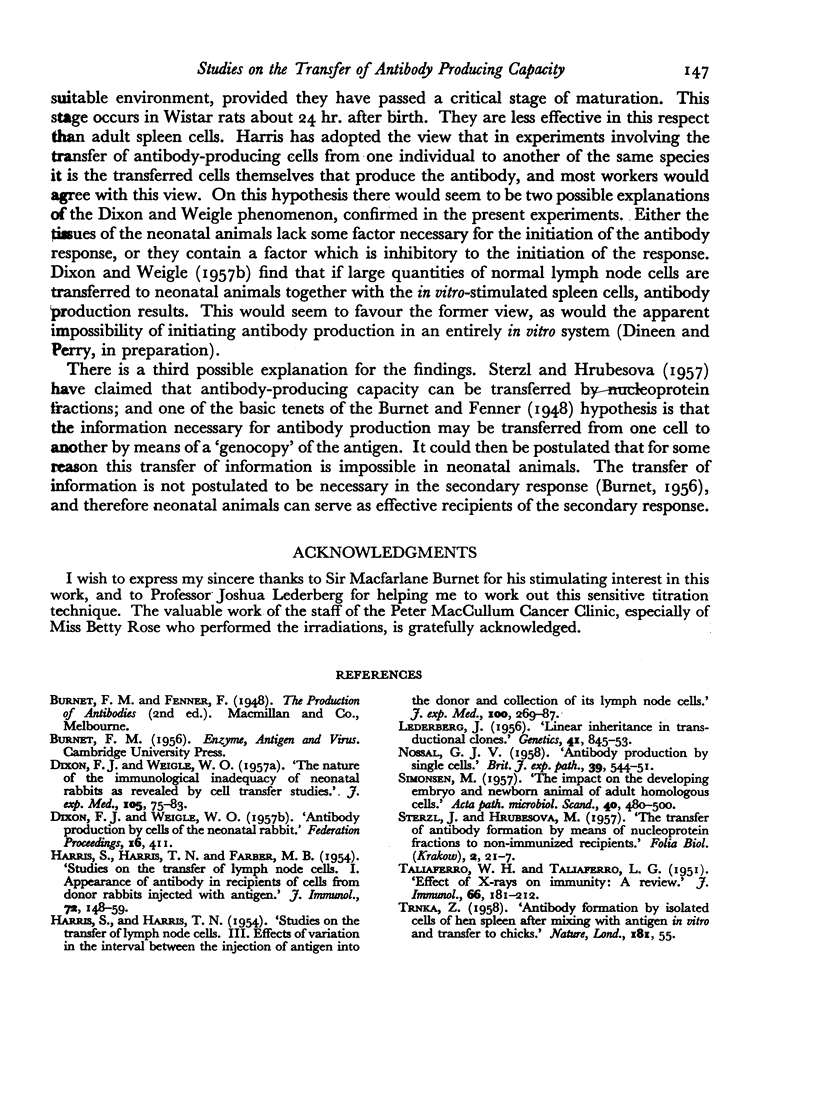Abstract
Normal adult spleen cells were antigenically stimulated by incubation with isolated flagella from Salmonella bacteria, and after neutralization of free antigen and washing, were transferred to normal and sublethally X-irradiated mice and rats of various ages by intraperitoneal injection. Neonatal rats and Hall Institute mice could not produce antibody following such injections, but more mature rats and Hall Institute mice, and neonatal C3H mice, could produce antibody.
Cells from immunized spleens were secondarily stimulated in vitro and transferred to neonatal and more mature recipients. Regardless of the age of the recipients, antibody production typical of a secondary response ensued.
Cells from neonatal rat spleens were stimulated in vitro and transferred to more mature recipient rats. Some antibody production resulted.
The theoretical implications of these findings are discussed.
Full text
PDF










Selected References
These references are in PubMed. This may not be the complete list of references from this article.
- DIXON F. J., WEIGLE W. O. The nature of the immunologic inadequacy of neonatal rabbits as revealed by cell transfer studies. J Exp Med. 1957 Jan 1;105(1):75–83. doi: 10.1084/jem.105.1.75. [DOI] [PMC free article] [PubMed] [Google Scholar]
- Lederberg J. Linear Inheritance in Transductional Clones. Genetics. 1956 Nov;41(6):845–871. doi: 10.1093/genetics/41.6.845. [DOI] [PMC free article] [PubMed] [Google Scholar]
- SIMONSEN M. The impact on the developing embryo and newborn animal of adult homologous cells. Acta Pathol Microbiol Scand. 1957;40(6):480–500. [PubMed] [Google Scholar]


